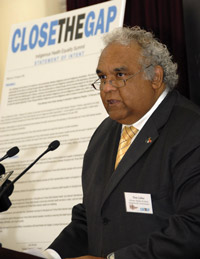Planning the next steps in an Indigenous-led journey
first step [towards] a future where we harness the determination of all Australians, Indigenous and non-Indigenous, to close the gap that lies between us in life expectancy, educational achievement and economic opportunity.
Scattered throughout this special MJA Indigenous Health issue are brief contributions from some of the key organisations in the Close the Gap campaign (Social justice, Psychology, National Indigenous Health Equality Council, Dentistry, Aboriginal community controlled health services, Oxfam Australia, Nursing, Australian Indigenous Doctors Association). We asked each of them to outline one or two things that will make the most difference in the short term to the longer-term goal of closing the gap. Ranging from personal, through practical to political, their responses share a common thread: the importance of true partnerships with Aboriginal and Torres Strait Islander peoples at every step along the way.
- Ruth Armstrong1
- Medical Journal of Australia, Sydney, NSW





